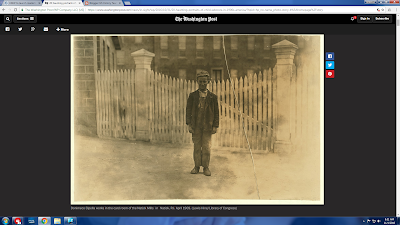 |
| Snippet of Weather Underground Graph |
As you have surmised by now, one thing I stress as an educator is cross-curricular learning and relevancy. Current events have always been one of my favorite ways to do both. This article, from Weather Underground, provides not just good analysis of the hurricane, but also provides some insightful information on the Okeechobee Hurricane of 1928 and the devastation that caused. There are some interesting mini-lessons that students could do to tie in both science and engineering into a history lesson. There's also some interesting potential to discuss the difficult decisions that have to be made when severe weather threatens an area. The article briefly mentions the water pollution that will inevitably occur as a result of the Army Corps of Engineers decision to drain some of the lake water to prevent flooding. There's some great material for a debate.
















